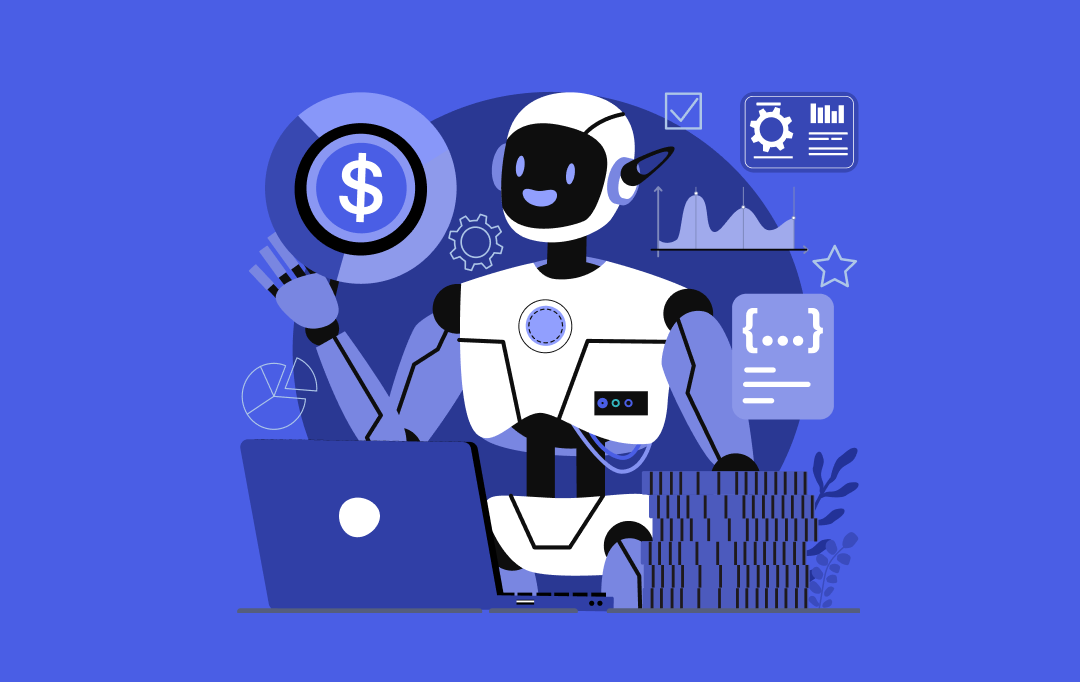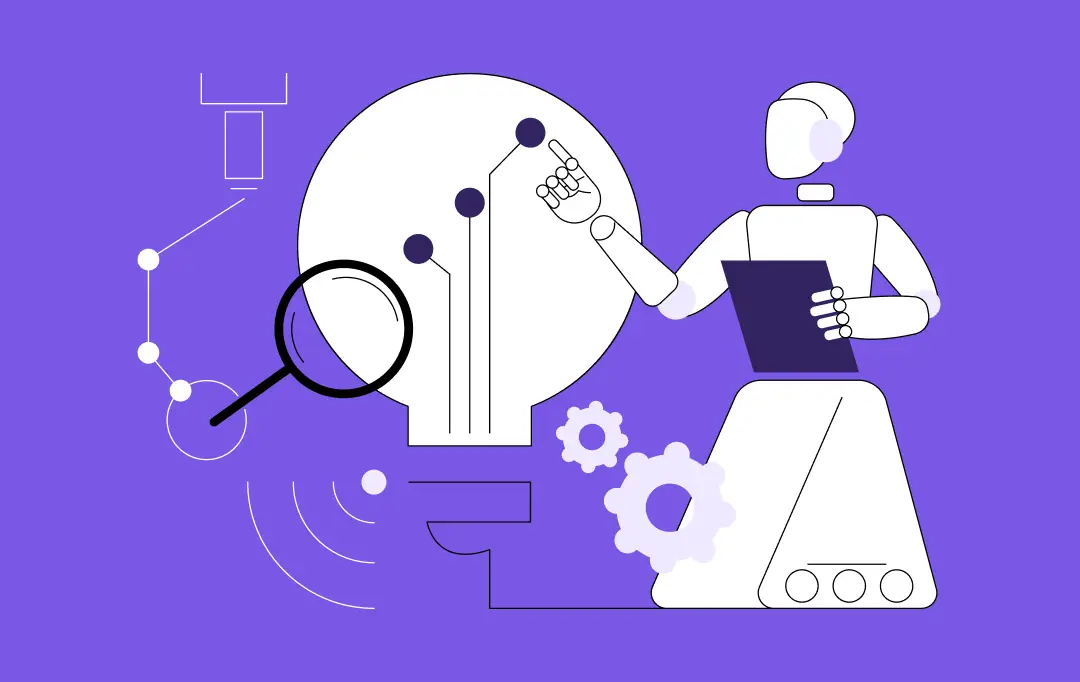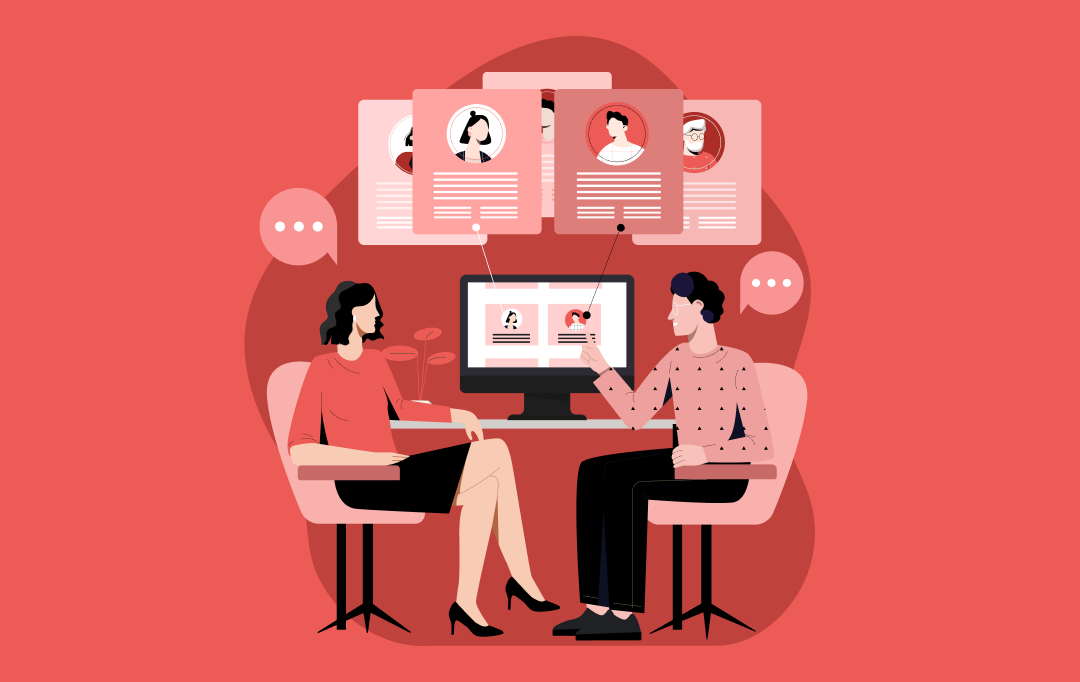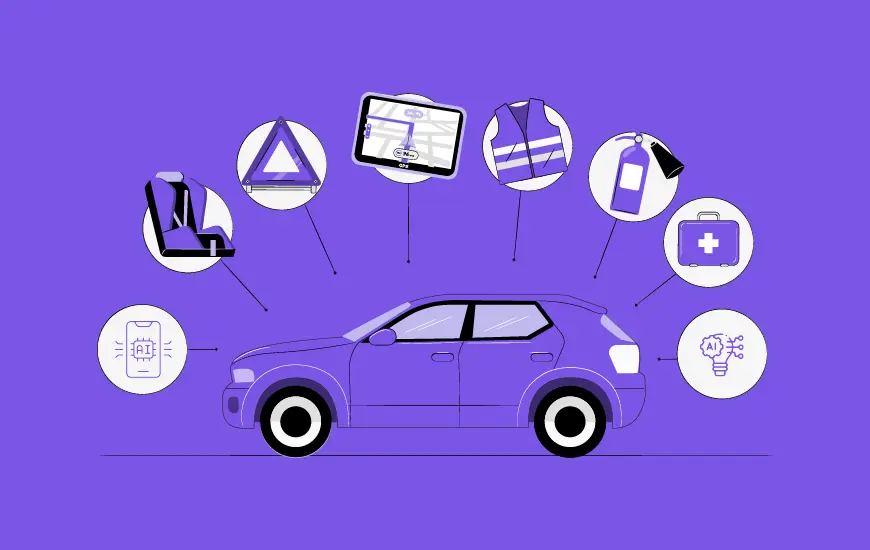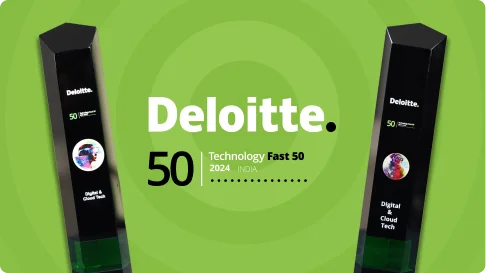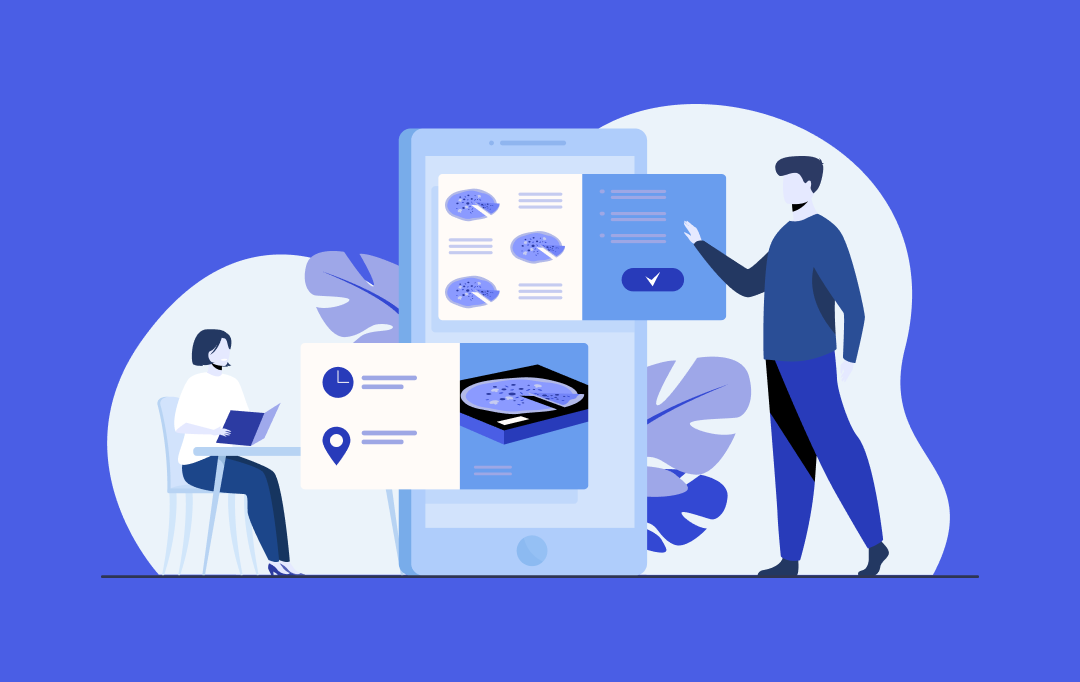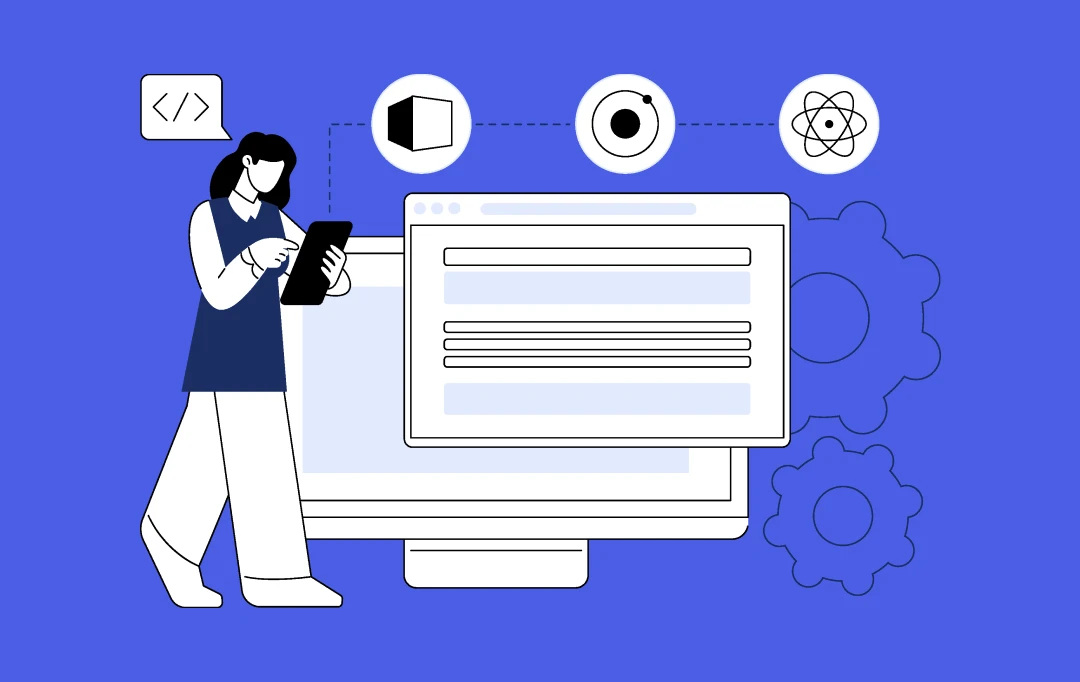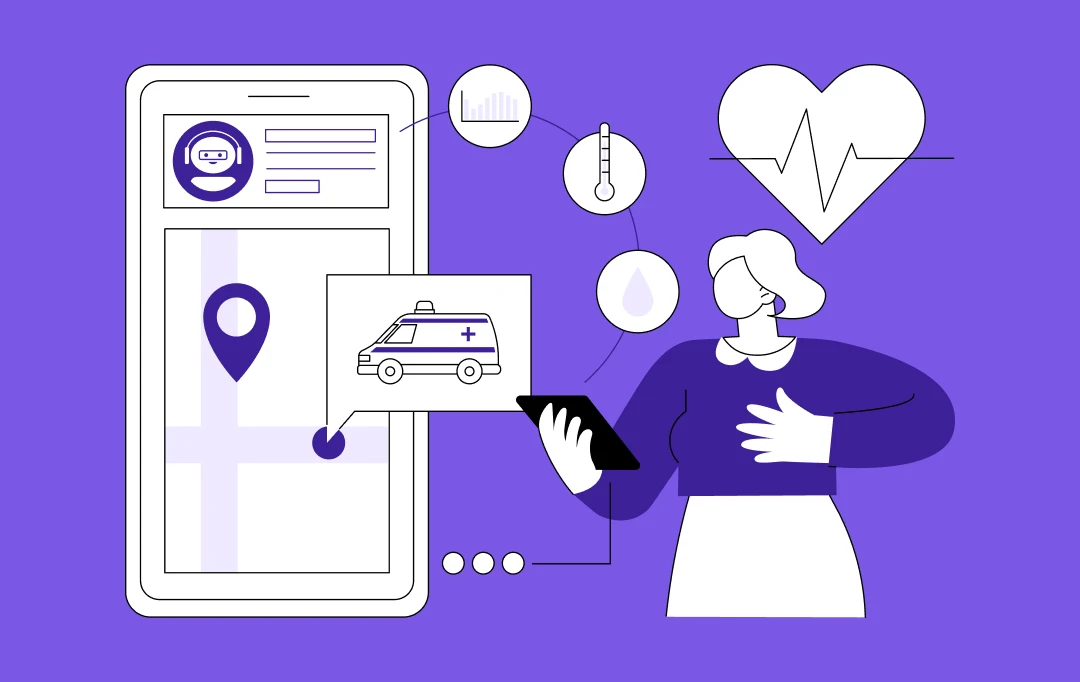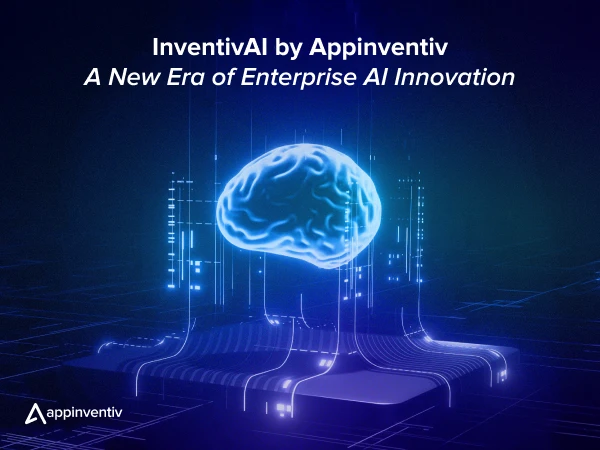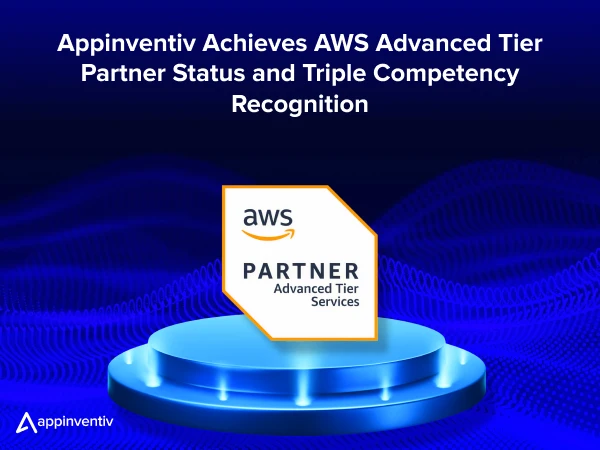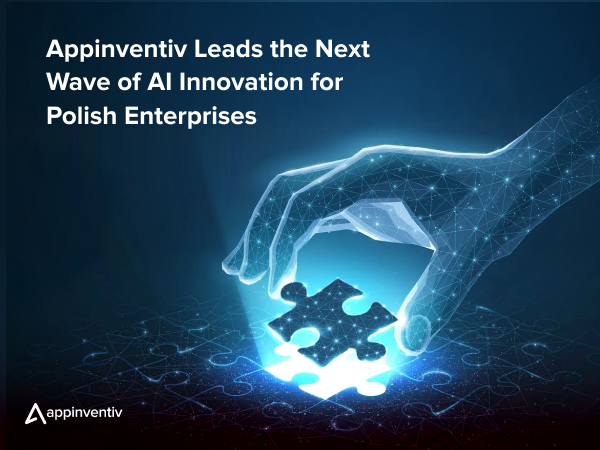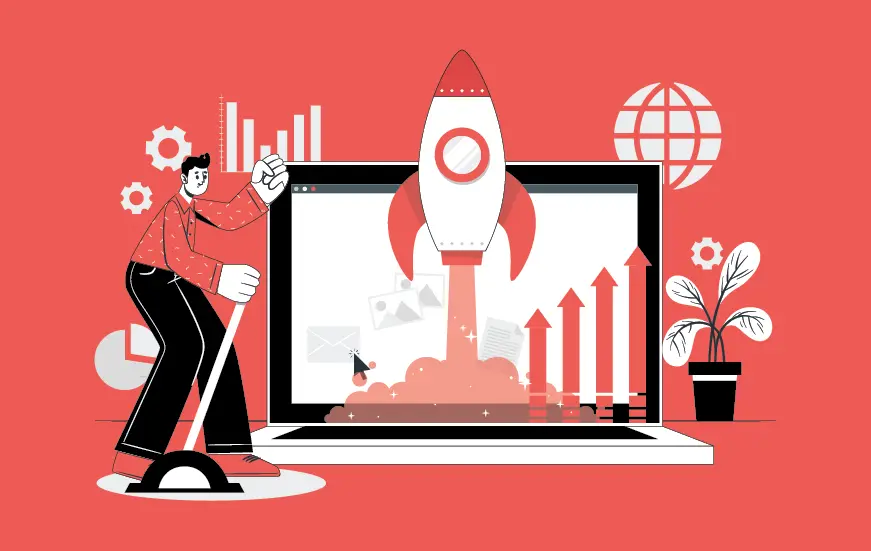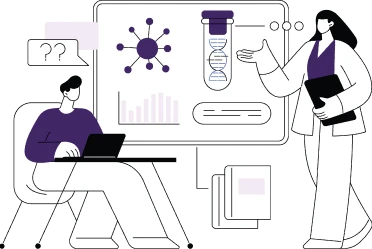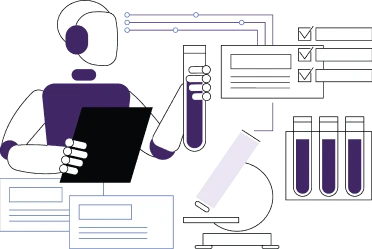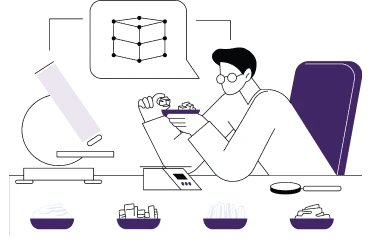- Understanding the National Vision
- Why Does This Matter for Egyptian Healthcare Enterprises?
- What Can You Build - AI-Powered Healthcare Solutions That Align with the Vision
- AI-Driven Clinical & Patient-Facing Solutions
- Backend & Enterprise Workflow Automation
- Ecosystem-Level Solutions
- How Do These Support Public Goals
- How to Build Compliant, Scalable Solutions for the Egyptian Healthcare Ecosystem?
- Regulatory & Compliance Foundations
- Localization & Accessibility
- Scalability by Design
- Common Pitfalls to Avoid
- How to Design for Interoperability from Day One?
- Align with National Health Systems
- Use Industry-Standard APIs & Protocols
- Be “Plug-in Ready” for Ecosystem Partners
- The Rise of White-Labelled B2B SaaS Platforms
- Where Appinventiv Fits In?
- Egypt’s Health AI Future Is Being Written Now
Key takeaways:
- Digital Egypt 2030 is transforming healthcare through AI diagnostics, telehealth platforms, and digital health records, opening up fresh business opportunities for companies.
- Egyptian enterprises need AI now as the government demands interoperability, regulatory compliance, and healthcare solutions that put digital technology first.
- Private companies play a vital role, since businesses must sync with public systems like UHIS and Sehat Misr to remain competitive and stay in the game.
- Meeting standards and growing smart matters most, creating platforms that work together, stay secure, and fit local needs is critical for winning in Egypt’s changing healthcare market.
The country’s bold Digital Egypt 2030 strategy is reshaping healthcare delivery at its core – rolling out nationwide electronic health records, building AI-powered diagnostic systems, and connecting clinics through real-time telehealth infrastructure. It’s a transformation led by public institutions, but it opens the door to something bigger: a new era of collaboration with the private sector.
For Egyptian enterprises building healthcare solutions, this is a defining moment.
AI adoption is no longer an innovation experiment – it’s a national mandate. The demand for an intelligent, interoperable, and scalable platform is growing at a rapid pace, and enterprises have a unique role to play in delivering it. From AI triage tools to patient apps and cloud-native hospital systems to Arabic-language health chatbots, the possibilities are expanding in lockstep with the enterprise healthcare app development Egypt ecosystem.
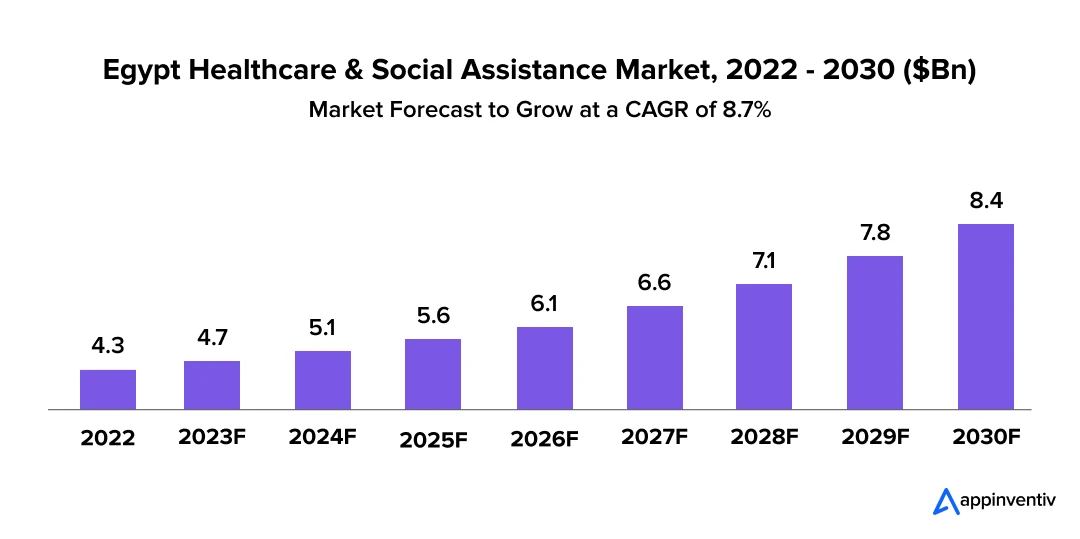
This guide walks you through how Digital Egypt 2030 healthcare vision aligns with enterprise opportunity, and what it takes to build AI-powered healthcare solutions in Egypt that are not only future-ready but future-shaping.
Our regional experts can help you navigate the Digital Egypt 2030 landscape with innovative AI-driven healthcare solutions.
Understanding the National Vision
Egypt’s healthcare system is undergoing a foundational shift – one where AI and digital platforms aren’t optional upgrades, but central building blocks. At the heart of this transformation is the Digital Egypt 2030 healthcare strategy, which sets out a clear agenda: use technology to expand access, improve care quality, reduce administrative burdens, and future-proof the system for a growing population.
The government’s focus is unmistakably digital. Through a nationwide rollout of the Universal Health Insurance System (UHIS), Egypt is digitising patient records, streamlining treatment approvals, and unifying hospital operations. Over 4.5 million electronic health records have already been created. More than 255 family medicine centres are now fully automated, and almost every lab, radiology unit, and outpatient clinic under UHIS has moved to digital operations.
At a technological level, Egypt is deploying:
- The ICD-11 classification standard ensuring data consistency across systems
- AI in radiology, helping clinicians detect conditions faster and with greater accuracy
- PACS systems for unified image archiving and retrieval
- AI-powered triage assistants and chatbots that support first-line diagnosis
- Cloud-based e-prescription platforms, with over 42 million digital prescriptions issued to date
This is more than healthcare digital transformation Egypt – With support from ministries, telecom providers, and private tech partners, it’s a deliberate, state-backed effort to build a national AI strategy for healthcare in Egypt and lay a future-ready foundation.
For enterprises, the message is clear: to remain relevant and interoperable, healthcare solutions must align with the government’s digital vision – from data standards to AI functionality.
Why Does This Matter for Egyptian Healthcare Enterprises?
The government may be leading the charge, but Digital Egypt 2030 healthcare transformation cannot succeed without active participation from private sector players. For hospitals, diagnostic labs, insurers, and digital health startups, the implications are immediate and strategic.
Most of the AI-powered healthcare solutions in Egypt are expected to be built for integration, interoperability, or complementing public infrastructure. Whether you are building a new telehealth platform, an EHR module, or a diagnostic AI model, your system must be compatible with what the national ecosystem is already deploying. Here’s why enterprise alignment is no longer optional:
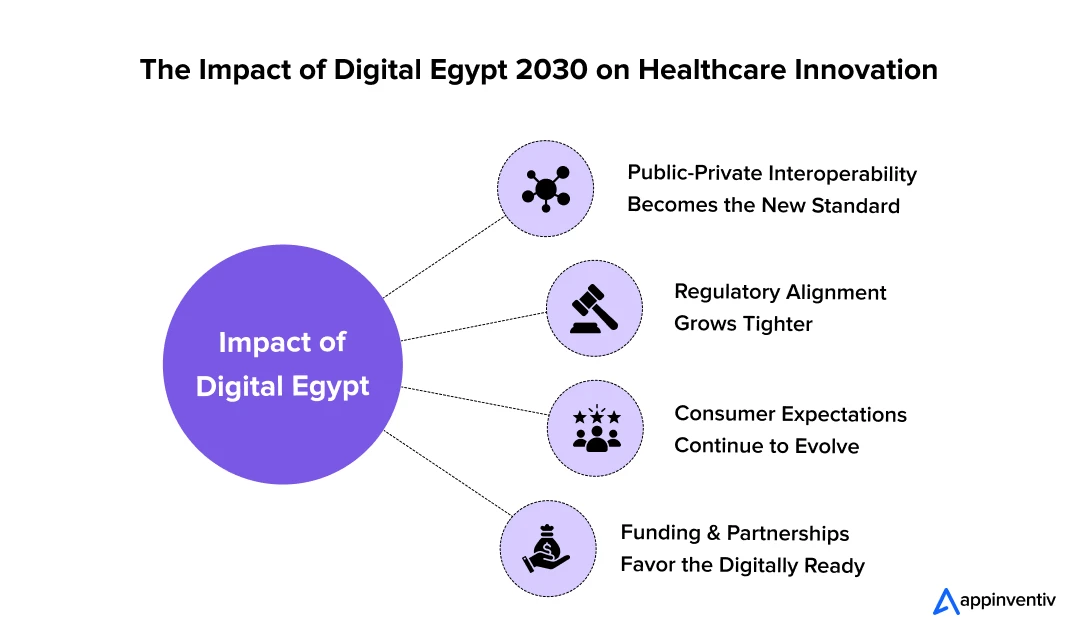
- Public-private interoperability is becoming standard
UHIS and government-run health networks will increasingly require third-party systems – including those from private hospitals – to share data securely, match coding standards like ICD-11, and comply with audit requirements. - Regulatory alignment is tightening
AI in the Egyptian healthcare sector is under growing scrutiny. Clinical-grade tools must meet emerging Ministry of Health guidelines for explainability, patient safety, and cybersecurity. Enterprises that embed these checks from day one will be faster to scale.
[Also Read: A Guide to Global Healthcare Compliances] - Consumer expectations have shifted
With over 13 million digital health appointments already booked through public systems, Egyptians now expect digital-first, responsive, and mobile-native care. Legacy platforms or fragmented patient experiences will rapidly fall out of favour. - Funding and partnerships favour the digitally ready
Organizations that demonstrate compatibility with national objectives stand to benefit from government contracts, golden licences, and ecosystem partnerships – particularly as Egypt encourages local innovation in AI in healthcare.
In short, the rules of competition have changed. Enterprises that delay modernisation risk irrelevance, while those that act early have the chance to lead Egypt’s new healthcare frontier.
What Can You Build – AI-Powered Healthcare Solutions That Align with the Vision
As Egypt pushes forward with its digital transformation, there’s growing demand for private-sector tools that enhance, extend, or embed into national systems. Enterprises have a wide-open opportunity to develop AI-powered healthcare solutions in Egypt that support both clinical delivery and operational efficiency, particularly as hospitals, clinics, and insurers look to future-proof their infrastructure.
Here’s a broader look at what enterprise healthcare app development Egypt can target, across patient care, diagnostics, workflow, and ecosystem integration:
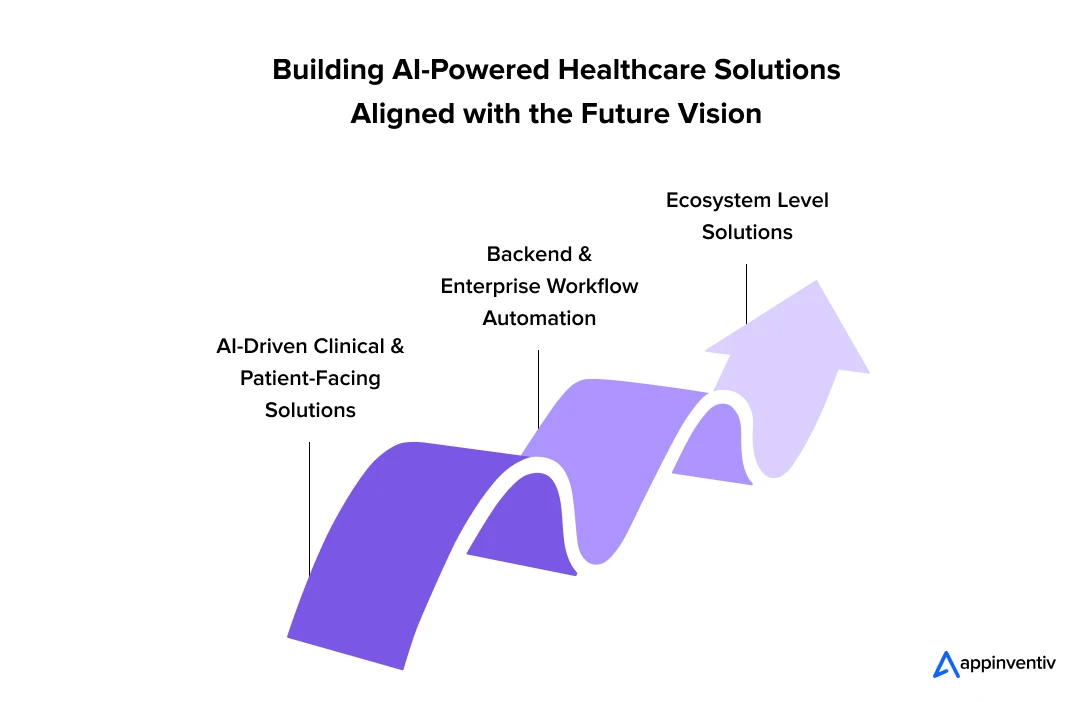
AI-Driven Clinical & Patient-Facing Solutions
- AI triage assistants for call centres and online portals
- Teleconsultation platforms with e-prescriptions and clinician availability scheduling
- AI imaging tools for diagnostics (radiology, dermatology, ophthalmology)
- Symptom checkers with embedded clinical decision support
- Personalised health chatbots trained in Arabic NLP for chronic condition management
- Home-monitoring apps integrated with wearables or IoT medical devices
- Mobile-first patient portals with appointment booking, test result tracking, medication reminders
- Virtual post-operative care apps, reducing readmissions and improving recovery
- Remote maternal health apps with AI screening for at-risk pregnancies
- AI-driven mental health tools, providing 24/7 support and escalation when needed
Backend & Enterprise Workflow Automation
- AI scheduling engines for patient flow and bed occupancy
- Predictive analytics for inventory management and medicine restocking
- AI-powered billing assistants, reducing claims errors and fraud
- Voice-to-text transcription tools for clinicians, speeding up SOAP note documentation
- Smart resource routing platforms for ambulance and emergency response
- Interoperability layers/APIs to sync with UHIS and public registries
Ecosystem-Level Solutions
- Hospital Information Systems tailored for private clinics but aligned with UHIS specs
- White-labelled AI telehealth platforms that private hospitals can deploy rapidly
- AI-powered healthcare solutions in Egypt built around population health dashboards for private insurers and policymakers
- Digital twin models of hospital networks for simulation and planning
- Chronic disease management ecosystems that combine patient data, AI alerts, and real-time feedback loops
How Do These Support Public Goals
All of the above solutions, when thoughtfully built, directly reinforce the goals of Digital Egypt 2030 healthcare:
- Access — Bring care to rural and underserved communities via telemedicine
- Affordability — Automate processes, reduce waste, and lower system costs
- Data centralisation — Enable seamless, secure data sharing with public health systems
- Efficiency — Support clinicians with faster diagnostics, better planning, and AI-assisted care delivery
Enterprises that build these solutions with interoperability, local relevance, and clinical safety in mind won’t just serve their clients – they’ll help scale Egypt’s national transformation in healthcare.
We’ll help you get ahead of regulations, tech specs, and clinical needs.
How to Build Compliant, Scalable Solutions for the Egyptian Healthcare Ecosystem?
Ambition alone isn’t enough. For enterprises pursuing healthcare app development in Egypt, success depends on building platforms that are not only innovative but also compliant, secure, and deeply aligned with local realities.
Whether you’re targeting public-private partnerships or private market clients, here’s what it takes to ensure your solution is ready for real-world deployment within the framework of healthcare digital transformation Egypt.
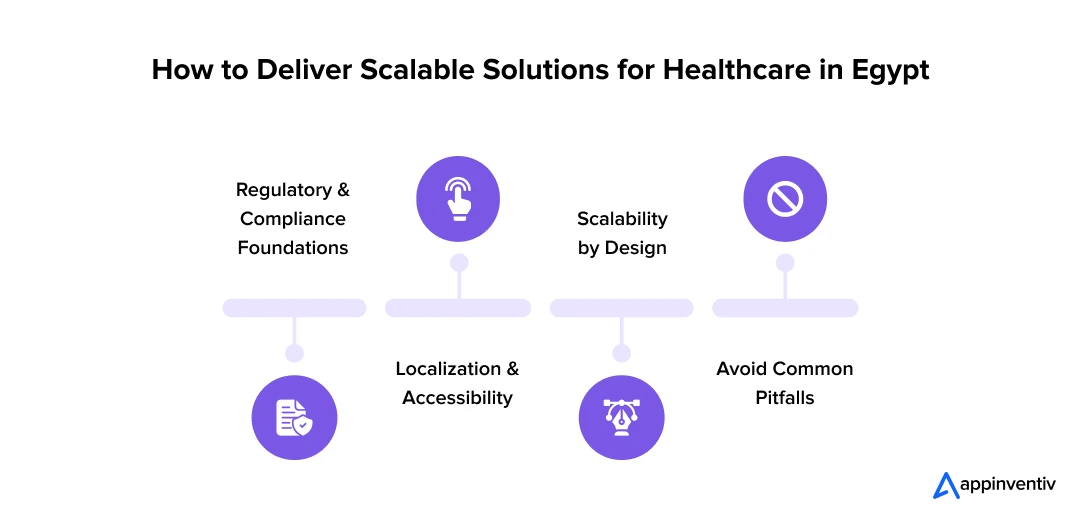
Regulatory & Compliance Foundations
For enterprises pursuing enterprise healthcare app development in Egypt, success is directly dependent on building platforms that are not just innovative but also compliant, secure, and deeply aligned with local realities. Whether you are targeting public-private partnerships or private market clients, here is what it will take to ensure that your solution is ready for real-world deployment within the framework of healthcare digital transformation in Egypt.
- Regulatory & Compliance Foundations: To operate within Egypt’s health ecosystem, regulatory compliance isn’t optional but your licence to scale.
- Data Hosting: As per Ministry of Health (MoH) regulations, all the medical data you use should be stored on locally hosted servers, also all your cloud-native apps must ensure compliance with Egyptian data residency laws.
- EHR Standards: All the platforms should be compatible with ICD-11 and the evolving UHIS interoperability protocols. Disregarding these can lead to a situation where future integration or public sector partnership gets blocked.
- Privacy & Security: While Egypt doesn’t follow HIPAA policy, solutions which are built to align with HIPAA-like frameworks (access control, encryption, audit logging, patient consent management) are considered to be of enterprise-grade and favourable for public sector adoption.
- Clinical Validation: AI-enabled tools should demonstrate explainability and risk classification, especially if they carry an influence on diagnosis, prescribing, or triage decisions.
Localization & Accessibility
For the software adoption to scale, your app should speak the local language – literally and culturally.
- Arabic NLP Support: Applications – specifically chatbots, patient interfaces, or triage systems – should be designed to handle both Modern Standard Arabic and local dialects. For this, don’t depend entirely on translated UI; the AI model must also be built to process Arabic medical terminology natively.
- User Experience for All Populations: Interfaces built on AI should work for elderly patients, low-literacy users, and non-tech-savvy caregivers. On that front, things like avoiding dense UI, and prioritising clear navigation, large typography, and visual cues come in useful.
- Offline Mode: Connectivity gaps, especially in rural or low-bandwidth areas, are very common in Egypt, meaning your app should function with offline access and automatic data sync once reconnected.
Scalability by Design
Digital Egypt 2030 is not a pilot – it is national scale. Your platform must be ready to match it.
- Modular Architecture: Build apps in microservices or modular layers so they can grow with changing MoH APIs, insurance requirements, or enterprise needs.
- Cloud-native Infrastructure: Use containerisation and scalable cloud services (while ensuring local data hosting) to handle spikes in usage, such as national programme launches or pandemic scenarios.
- Integration-First Thinking: Design your system to work with UHIS, Sehat Misr, and other public systems from day one. Avoid closed systems or rigid architecture – these create costly rework later.
- Monitoring & Observability: Building salable platforms would demand a built-in diagnostics, uptime tracking, and AI performance monitoring platform to support rapid deployment across the partnered hospital groups.
Common Pitfalls to Avoid
Even technically adept products can fail if they ignore local realities or system dynamics. Here are some ways to ensure it doesn’t happen with you.
- Fragmented Architecture: Over-engineering or patching tools from multiple vendors without any integration support can derail the scope of future interoperability.
- One-Size-Fits-All Design: Solutions that don’t localise for Egypt’s medical, linguistic, and demographic context will find it very difficult to gain adoption.
- Ignoring Edge Cases: Rural clinics, patients with disabilities, low-end devices – these are not exceptions in Egypt. They’re the norm.
Bottom line: Success isn’t just about launching a feature-rich app. It’s about building a compliant, accessible, and scalable platform that fits Egypt’s national direction – and reaches every corner of its healthcare ecosystem.
How to Design for Interoperability from Day One?
In Egypt’s fast-evolving health tech landscape, standalone systems are rapidly becoming obsolete. Whether you’re building for public sector alignment or private hospital networks, healthcare interoperability is no longer a nice-to-have – it’s a necessity.To succeed, every enterprise platform must be ready to connect with national infrastructure from day one.
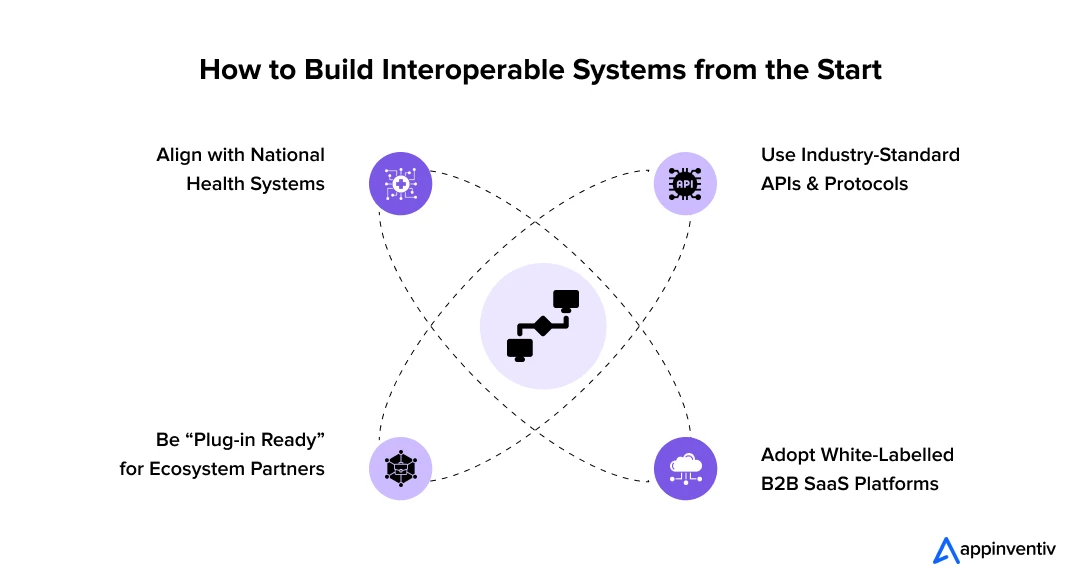
Align with National Health Systems
Egypt’s healthtech backbone is expanding, and your product needs to plug into it to stay relevant.
- UHIS: All EHR systems, diagnostic platforms, and billing tools must eventually sync with UHIS data models and workflows.
- Sehat Misr & Salamatak: These state-run platforms manage appointments, prescriptions, and patient journeys across public providers. Tools built to increase enterprise AI adoption in Egypt should keep a dedicated focus on integration to prevent getting cut off from a growing portion of the patient base.
- EHA & MoH Standards: The Egyptian Health Authority and Ministry of Health make it mandatory for healthcare software to have consistent health coding like the ICD-11, secure communication protocols, and seamless compatibility with national architecture plans.
Use Industry-Standard APIs & Protocols
The simplest way to ensure interoperability is to build on global health data standards – and extend them to Egypt’s needs.
- HL7 & FHIR: Fast Healthcare Interoperability Resources and HL7 are becoming widely used for health data exchange in Egypt. Support them in your backend from the start.
- RESTful APIs with local extensions: Build modular APIs that can interface with third-party labs, insurers, pharmacies, and government APIs. Include Arabic data fields and local code sets.
- Integration testing environments: Offer sandbox environments or pilots to test integration with UHIS or EHA platforms – this speeds up procurement approvals.
Be “Plug-in Ready” for Ecosystem Partners
To gain traction, your platform must easily connect with others, not force them to replace what they’ve already built.
- Private hospital IT systems often already run local HIS or lab software. Your product should support layered deployment, not rip-and-replace models.
- Insurance providers and TPAs are digitising fast, because of which platforms that can automate claims processing, eligibility verification, and fraud detection through shared APIs are set to see a faster uptake.
- Diagnostic vendors and radiology centres need systems that accept/send data in compatible formats (DICOM, HL7, etc.), especially for AI-powered healthcare solutions in Egypt that are designed around image analysis tools.
The Rise of White-Labelled B2B SaaS Platforms
One of the fastest-growing trends in enterprise AI adoption in Egypt, especially in the healthtech scene, is the development of white-labelled AI platforms.
- These are modular, branded solutions that private clinics, pharmacy chains, or hospital groups can deploy under their name while relying on your underlying AI engine or backend architecture.
- White-labelled offerings are attractive to mid-sized providers who want digital transformation without full in-house development of AI-driven telehealth platforms for Egyptian enterprises.
- Being “integration-ready” out of the box makes your solution a drop-in asset for this emerging market.
Key takeaway: In a nationally connected healthcare system, disconnected products don’t survive. Build with interoperability at the core, and your solution becomes part of Egypt’s healthcare future, not an isolated outlier.
We’ll help you meet national specs with HL7/FHIR-ready architecture and seamless API integration.
Where Appinventiv Fits In?
At Appinventiv, we don’t just build apps – we help enterprises build the future of healthcare. With a local presence in Egypt and localised expertise in AI in Egyptian healthcare sector, we work closely with hospitals, insurers, clinics, and healthtech innovators to deliver platforms that align with the national digital health agenda.
Whether you’re developing a telehealth solution, an AI diagnostics engine, or a modular EHR system tailored for local compliance, we are the custom mobile app development company in Egypt that brings it together:
- Deep domain knowledge and an experience of over 10years in AI in the Egyptian healthcare sector
- Interoperability-first architecture, built for UHIS, ICD-11, and Sehat Misr integration
- Arabic NLP capability for conversational AI, symptom checkers, and patient engagement
- Scalable infrastructure, ready for rural deployments and multi-location health groups
- Regulatory-aligned healthcare app development for enterprises, following HIPAA-style data governance and MoH standards
As Egypt continues to digitise healthcare at a national scale, Appinventiv helps you keep pace with platforms that are not only compliant and future-ready but also co-created with local realities in mind. Reach Out to Experts now.
Egypt’s Health AI Future Is Being Written Now
The direction is clear. Enterprise healthcare app development Egypt for Digital Egypt 2030 isn’t a technology campaign – it’s a structural overhaul of how healthcare is delivered, measured, and improved across the country. And it’s moving fast.
For enterprises, this is a moment of rare alignment between policy, infrastructure, and market demand. Those who act early are better positioned to:
- Build platforms that fit naturally within national systems like UHIS and Sehat Misr
- Access public-private partnerships, pilot opportunities, and health innovation funds
- Shape the standards by which future integrations, reimbursements, and AI validations are defined
As the government enforces more rigorous benchmarks for digital readiness in Egyptian healthcare, the distinction between compliant and non-compliant platforms will sharpen quickly. Enterprise platforms that lack interoperability, local relevance, or AI governance will struggle to gain traction – or even access.
This is not a short-term trend or a temporary wave of funding. This is the National AI strategy Egypt healthcare.
Enterprises that build with this mindset – long-term, scalable, and standards-aligned – won’t just keep up, they will lead.
FAQs
Q. How’s AI actually being used in hospitals in Egypt?
A. AI-powered healthcare solutions in Egypt are not all big and shiny – a lot of it is working quietly in the background. Some hospitals, especially those in Cairo or Alexandria, have even started using AI to help speed up diagnoses, particularly in departments like radiology. Nothing dramatic, just systems that spot things quicker or reduce admin work. Doctors still make the calls – AI just helps them get there faster.
Q. Any examples of AI that are actually working in Egypt’s health sector?
A. Yes, a few. AI’s showing up in scan interpretation, symptom checkers on mobile apps, and even tools that help clinics schedule visits more efficiently. Some chatbot systems are being tested to guide patients through common complaints. It’s not everywhere, and not all of it works perfectly yet – but it’s moving.
Q. How does this kind of tech support actual patient care?
A. Mostly by saving time. Some systems bringing healthcare digital transformation Egypt can pick up on abnormal test results early or remind staff if someone needs a follow-up. Some doctors use voice tools instead of typing everything by hand. Patients might not realise it’s AI – they just notice that things are a bit smoother or faster than before.
Q. What’s Egypt’s bigger plan when it comes to AI in healthcare?
A. It’s tied to the whole Digital Egypt 2030 healthcare strategy. The government is working toward connecting systems, making data more usable, and bringing smarter tools into everyday care. AI is just one piece of it. There’s a long-term vision, but the rollout’s careful – they’re not rushing it.
Q. Is AI being used in telehealth in Egypt, too?
A. Yes, and that’s probably where most people will interact with it first. Some platforms are testing AI features that help describe symptoms or suggest what kind of doctor to see. Others track patient recovery after online consults. It’s still early days, but it’s a smart way to deal with the demand for care outside major cities.
Q. Are there rules for using AI in medicine in Egypt?
A. There isn’t a full legal framework yet, but there are expectations. Tools need to protect patient data, and anything that helps with diagnoses has to be transparent – you can’t just give a result without explanation. Hospitals are cautious, and rightly so. It’s about responsibility, even if the law hasn’t fully caught up.


- In just 2 mins you will get a response
- Your idea is 100% protected by our Non Disclosure Agreement.
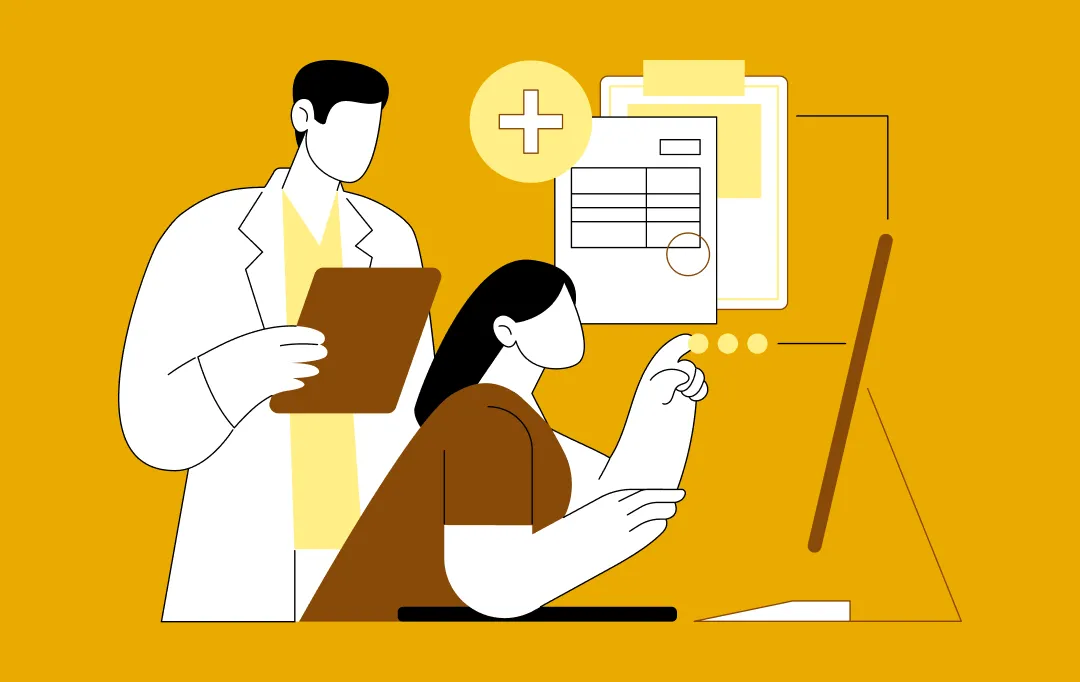
How Much Does It Cost to Build a Healthcare App in Saudi Arabia? All You Need to Know
Key takeaways: Healthcare app costs in Saudi Arabia range from 112,500 SAR to 2,250,000+ SAR based on size and complexity. The type of app you build matters more to cost than anything else. Compliance, security, and scalability are built into the cost, not add-ons. Development and testing consume the largest share of the budget. Hidden…
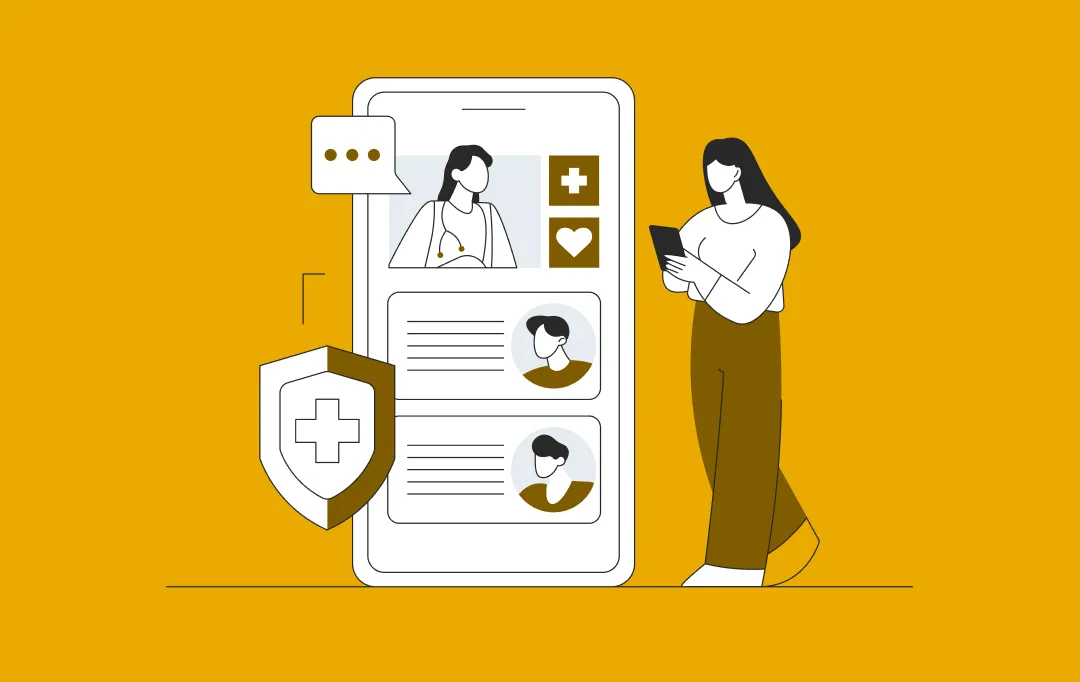
How Prescriptive Analytics Is Shaping the Future of Healthcare Management
A healthcare business doesn’t fall behind because its teams lack skill. It falls behind when decisions take too long. Bed allocation runs on yesterday’s data. Procurement reacts only when shortages hit. Care managers step in after a patient is already at risk. And leadership gets a picture of what’s happening only after the quarter closes,…
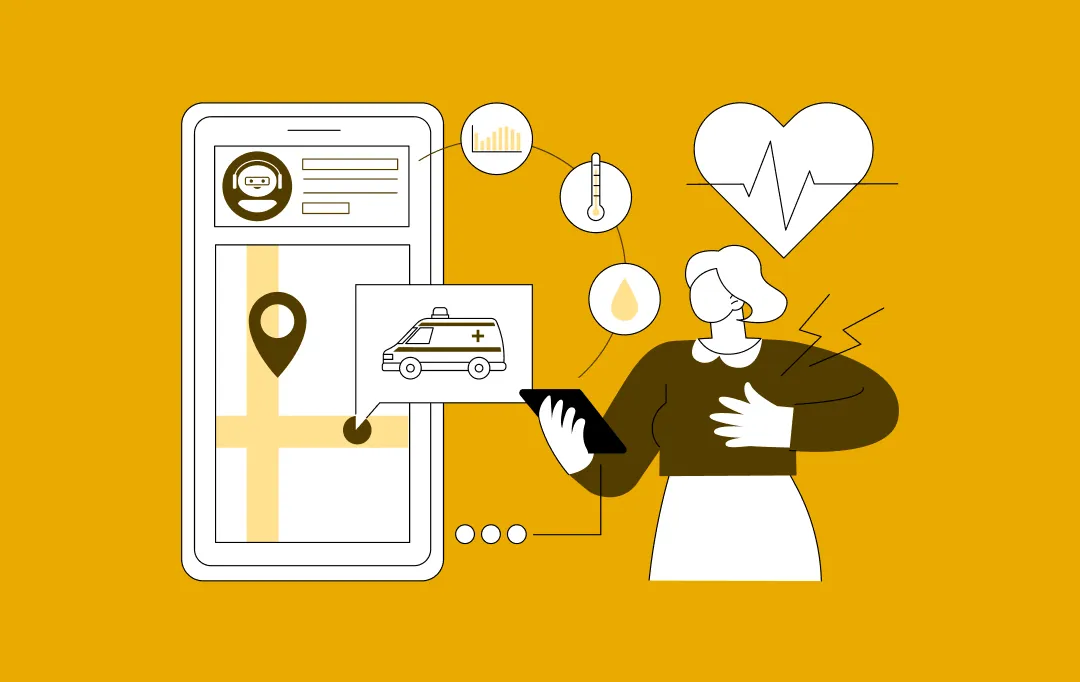
How to Build an Urgent Care App? A Step-by-Step Process, Features and Costs
Key takeaways: With more people turning to digital healthcare, the urgent care app market is expected to touch $3.1 billion by 2024 and continue growing fast through 2030. Apps that offer easy scheduling, video consultations, EHR access, and quick insurance handling tend to attract more users and keep them coming back. Developing an urgent care…
